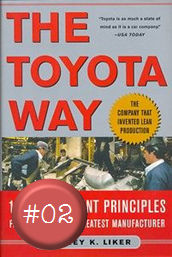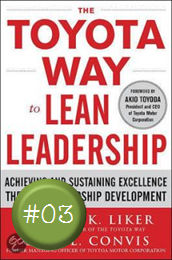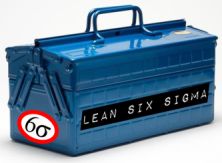![]()
In het artikel Staple Yourself to an order (1992) bepleiten Benson P. Shapiro, Kasturi Rangan en John Sviokla om jezelf vast te nieten aan een order om vanuit een klantperspectief je eigen proces te beleven:
![]()
It's fashionable today to talk of becoming "customer oriented." Or to focus on that moment of truth when customers experience the actual transaction that determines whether or not they are completely satisfied. Or to empower frontline workers so they can delight the customer with their initiative and spunk.
None of that advice, however, focuses on the real way to harness the customer's interests in the operation of a company. The simple truth is that every customer's experience is determined by a company's order management cycle (OMC): the ten steps, from planning to postsales service, that define a company's business system. The order management cycle offers managers the opportunity to look at their company through a customer's eyes, to see and experience transactions the way a customer does. Managers who track each step ofthe OMC work their way through the company from the customer's angle rather than from their own.
In the course of the order management cycle, every time the order is handled, the customer is handled. Every time the order sits unattended, the customer sits unattended. Paradoxically, the best way to be customer oriented is to go beyond customers and products to the order. The moment of truth occurs at every step of the OMC, and every employee in the company who affects the OMC is the equivalent of a frontline worker. Ultimately, it is the order that connects the customer to the company in a systematic and companywide fashion.
Moreover, focusing on the OMC offers managers the greatest opportunity to improve overall operations and create new competitive advantages. Managers can establish and achieve aggressive goals-such as "improve customer fill rate from 80% to 98%," "reach 99% billing accuracy," or "cut order cycle time by 25%"- and force otherwise parochialteams to look at the entire order management cycle to discover how various changes affect customers. When the OMC is substituted for narrow functional interests, customer responsiveness becomes the overriding goal of the entire organization, and conflicts give way to systemic solutions. The best way for managers to learn this lesson and pass it on to their whole workforce is, in effect, to staple themselves to an order. They can then track an order as it moves through the OMC, always aware that the order is simply a surrogate for the customer.
In 2004 herhalen Shapiro, Rangan en Sviokla hun boodschap in een artikel met dezelfde titel Staple Yourself to an Order:
![]()
The executive who wants to delight customers—and thereby grow the top line—is apt to think big: Invent a breakthrough product; provide an extraordinary service. That’s great work if you can get it, but the more humble job of making sure customers aren’t excessively annoyed by the company’s order management processes may be more urgent and more relevant to future growth. Every time an order is handled, the customer is handled. Every time an order sits unattended, the customer sits unattended. Yet, to most senior executives, the details of the order management process are invisible. When managers take the time to track each step of the cycle, they come into contact with critical people like customer service representatives, production schedulers, order processors, and shipping clerks. Managers who “staple themselves to an order” will not only move horizontally across their own organization, charting gaps and building information bridges, but will also see the company from the customer’s perspective. There’s no better way to alter that perspective, improve interdepartmental relations, and—over the long haul—improve financial performance.
(...)
Of course, today, top managers know that customer service and customer satisfaction are critical to a company’s success. In one company after another, managers pursue the same solutions to problems that crop up with customers. They try to flatten the organization to bring themselves and nonmarketing people into direct contact with customers. But while flattening the organization is a fine idea, it’s not going to solve the real problem. No matter how flat an organization gets, no matter how many different functions interact with customers face-to-face—or phone to phone—what customers want is something else: to have their orders handled quickly, accurately, and cost-effectively.
What customers want is to have their orders handled quickly, accurately, and cost- effectively.
Here’s what top managers don’t do: They don’t travel horizontally through their own vertical organization. They don’t consider the order management cycle to be the system that ties together the entire customer experience and that can provide true customer perspective. Yet all ten steps are closely tied to customer satisfaction. Because the OMC is an intricate network that almost guarantees problems, top management’s job is to understand the system so thoroughly it can anticipate those problems before they occur. That means managers must walk up and down and from side to side, every step of the way.
Zie ook:
Bron:
- Staple Yourself to an order, Benson P. Shapiro, V. Kasturi Rangan & John J. Sviokla, in Harvard Business Review, july/august 1992
- Staple Yourself to an Order, Benson P. Shapiro, V. Kasturi Rangan & John J. Sviokla, in Harvard Business Review, july/august 2004




















